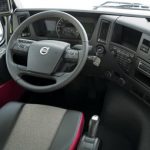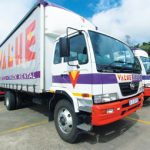Viva Volvo!
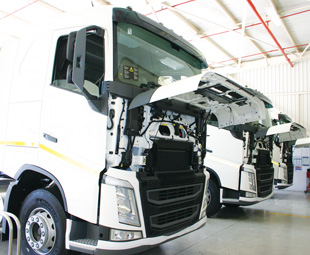
The first FH, FM and FMX models have emerged from Volvo’s South African factory! CHARLEEN CLARKE travels to the Durban facility and discovers a team that is bursting with pride …
The Volvo factory looks modern yet relaxed. But, according to Glen Owen, general manager of Volvo Truck Industries, it’s not without its challenges. “The biggest is probably the diversity of product that we’re building here,” he tells FOCUS. “In addition to Renault trucks and Volvo buses, we also build the FH, FM and FMX here … in total, we’re building 26 variants!”
The challenges aren’t anything like they were in the “old days”, however. Owen recalls that Volvo first started assembling its vehicles in Gaborone in 1994 as a private importer – which meant that it was extremely far from the market, plus logistical costs were high. “The cost of the freight from Port Elizabeth to Gaborone made up 60 percent of the total freight cost! Plus we were tying up capital for an extra week!” he reveals.
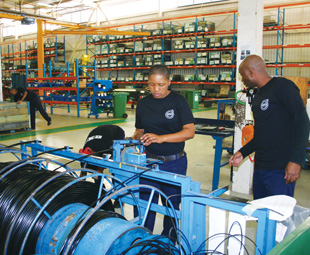 The business was acquired by AB Volvo on February 15, 2000. “We continued assembly in Botswana until October 2005. We were, however, mindful of the fact that 98 percent of the customer base was in South Africa,” Owen recalls.
The business was acquired by AB Volvo on February 15, 2000. “We continued assembly in Botswana until October 2005. We were, however, mindful of the fact that 98 percent of the customer base was in South Africa,” Owen recalls.
It was thus that, in February 2005, Volvo acquired the 21 772 m² property in Durban and, incredibly, took occupation of the factory in October that year (although the official opening only took place on January 2, 2006). A total of R41 million was invested in the plant, which boasts 7 422 m² under roof (the assembly plant accounts for 4 475 m², canopies for 1 965 m² and ablution/office/restaurant/training facilities for 982 m²).
It wasn’t easy finding the right skills in South Africa. “It was a challenge to find qualified employees. We had 60 positions available and over 500 applications, but we quickly realised that the skills were not there – so we had to think about training,” Owen tells FOCUS.
The Volvo Accelerated Development Programme – an extensive and unique training programme covering all aspects of the business – was born as a result. “We have invested several million rand in training and we have had exceptional results. We have two employees who are now production engineers as a result of this programme. They came here with no qualifications except matric. Employee retention has been excellent as a result of the training that we provide,” he notes.
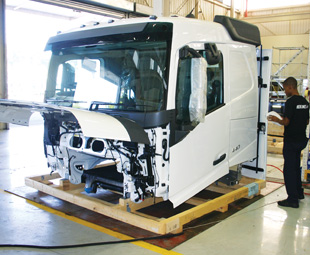 The plant had 60 employees when it first opened its doors; today 99 people are employed there. “We have two assembly lines. The one can produce ten trucks a day, working a single shift. It is a ten-stage line, and it was recently rebuilt. It is currently being used to build the new FH, FM and FMX only. We are currently at eight trucks a day, but we are ramping up to ten trucks a day. Our customers are screaming for our new trucks; we have an order book of over 1 000 trucks!” he reveals.
The plant had 60 employees when it first opened its doors; today 99 people are employed there. “We have two assembly lines. The one can produce ten trucks a day, working a single shift. It is a ten-stage line, and it was recently rebuilt. It is currently being used to build the new FH, FM and FMX only. We are currently at eight trucks a day, but we are ramping up to ten trucks a day. Our customers are screaming for our new trucks; we have an order book of over 1 000 trucks!” he reveals.
Experts from Sweden and Belgium visited the plant to provide specific training in production of the new trucks. Over R4 million was invested in equipment used for production of the new truck.
Line two can produce five trucks a day and it’s used to build the Volvo bus chassis and Renault trucks. “We’re slowly becoming a purple factory (when you mix the blue of Volvo and the red of Renault you get purple),” notes Owen with a laugh.
A total of 9 500 Volvo trucks, 840 Renault trucks and 235 buses have been produced by Volvo Truck Industries since 2006. Owen plans to produce a further 1 800 vehicles this year. “We build one truck every 47 minutes. In fact, we’ve already built a truck while you’ve been sitting here,” he points out.
Published by
Focus on Transport
focusmagsa

